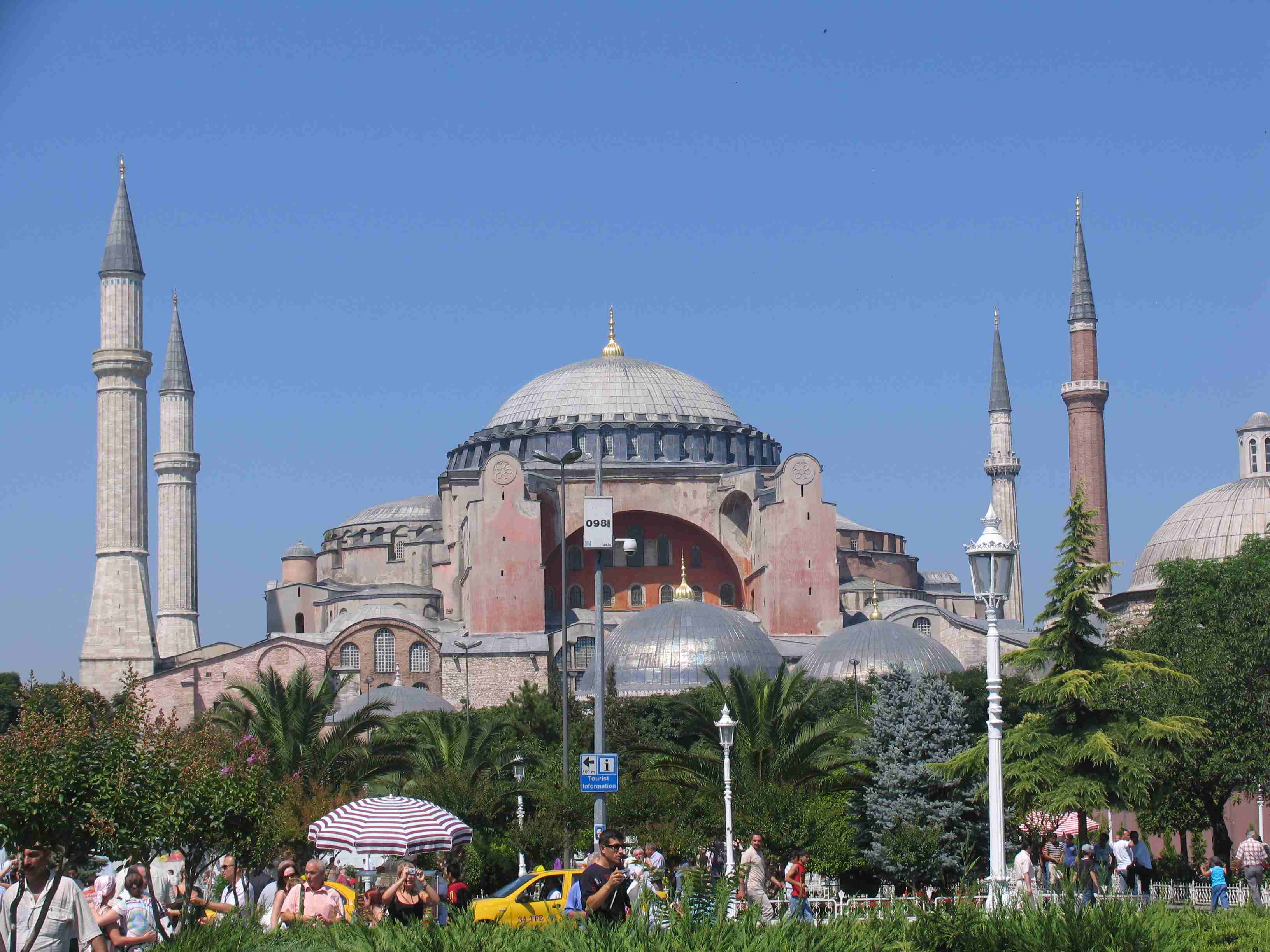
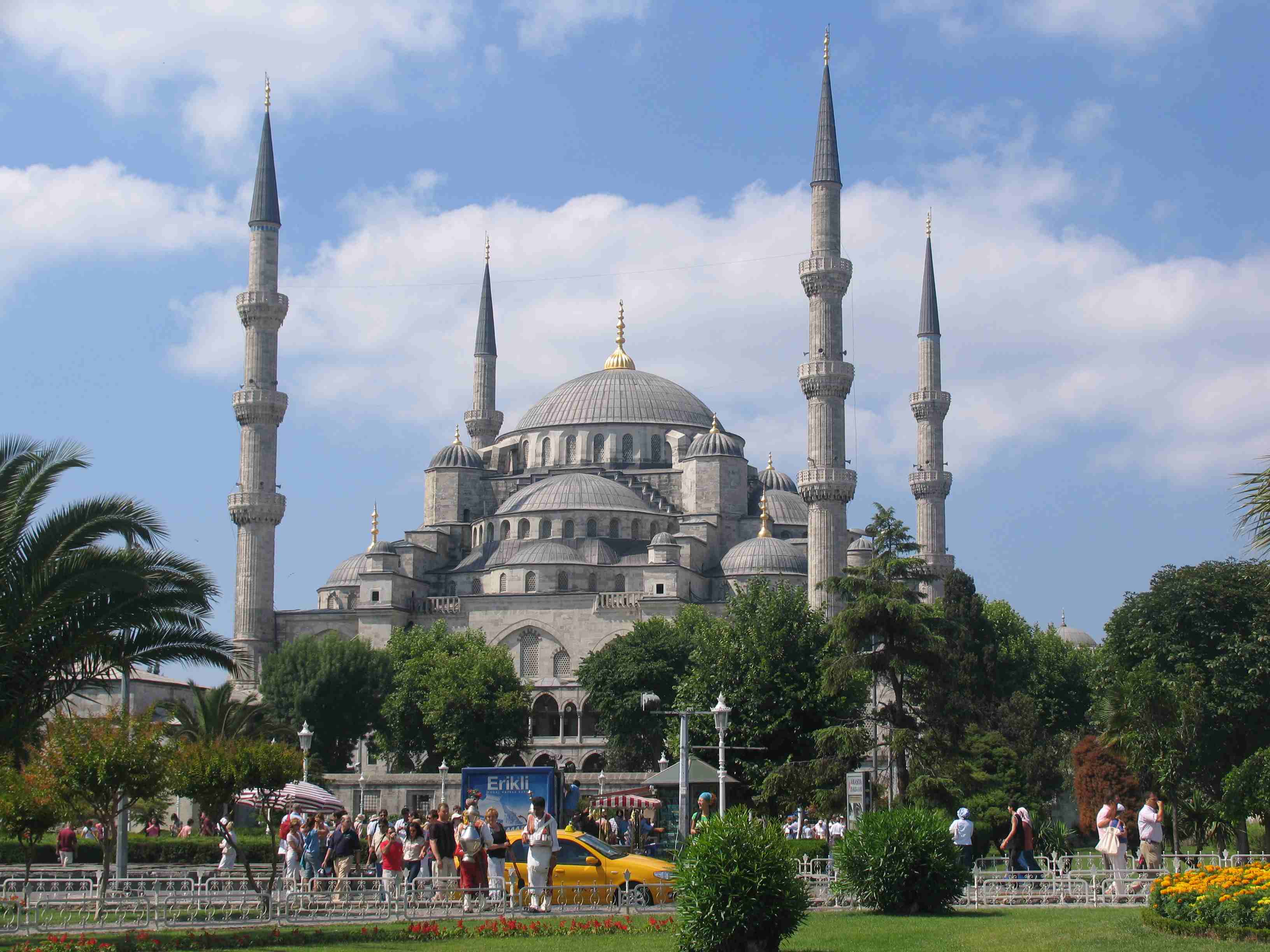
Turkey (2007)
Civilization's Crossroads
Our holiday in Turkey began with a week in Istanbul, continued with visits to the ancient cities of Pergamum and Ephesus, was highlighted by a four day sailing odyssey along the spectacular Turquoise Coast onboard a traditional Turkish gulet and capped off with a visit to Central Turkey and the surreal landscapes of Cappadocia.
 |
 |
Hagia Sofia Blue Mosque
Istanbul. Our first visit to Istanbul took place in 1969 when we loaded our kids in the back seat of our car and drove overland from our home on the Italian Riviera to Istanbul. Now, thirty-eight years later, we were happy to have a chance to return with our erstwhile traveling companions, Ron and Gay Baukol, to this unique and fascinating city.
Straddling the Bosphorus, with one foot in Europe and the other in Asia, Istanbul is the only metropolis in the world which finds itself situated on two different continents. In its long and colorful history, Istanbul has served as the capital of the Roman and Byzantine and Ottoman Empires. Following the fall of the Roman Empire and throughout the Middle Ages., Constantinople was largest and richest city in the world. Through the years, the city’s name has been changed from Byzantium to Constantinople to Istanbul. “Why they changed it, I can’t say” admits an old 1950’s song. “People just liked it better that way!”
Today, Istanbul is the cultural heart of Turkey with magnificent mosques, stately minarets, and sumptuous palaces creating a magic skyline against the blue waters of the Bosphorus, the narrow strait which separates East from West. With Ron busy at his World Chambers Congress meetings, I once again had the responsibility for entertaining my two wives during our days in Istanbul, escorting them through the city and feeling much like one of the sultans of old as he took his favorite wives shopping in the Grand Bazaar.
The heart of Istanbul is Sultanahmet Square with four of the most magnificent buildings in Europe - the Hagia Sofia, the Blue Mosque, the Topkapi Palace and the nearby Suleiman Mosque - all located within easy walking distance of each other in the historic center of “Old Istanbul”. We arranged for guided tours of each.
Built in the 6th Century during the Byzantine Period, the Hagia Sophia, with its massive dome and four elegant minarets was the largest church in Christendom for almost one thousand years before being transformed into a mosque and now into a museum. The Blue Mosque is distinctive with its beautiful blue domes, elegant courtyards and six slender minarets. The sprawling Topkapi Palace, where twenty-five sultans ruled the vast Ottoman Empire over a span of four centuries, is now a museum displaying the vast wealth of the sultans. The Suleiman Mosque is the largest, most prominent and to many, the most beautiful mosque in this mosque-filled city, built in the 16th century by Suleiman the Magnificent, who was the richest and most powerful of all the Ottoman sultans. .
It is amazing that four such magnificent monuments are found in such close proximity to each other. It is as if St. Peters in Rome, St. Paul’s in London, St. Basil’s in Moscow and Notre Dame in Paris were all located together. We spent a half day in each and could easily have spent much more but I was required to have my wives back to their harem in the Hilton by sundown
We couldn’t come to Istanbul without visiting the Grand Bazaar, the oldest and largest covered market place in the world. With its sixty streets and four thousand shops, it makes our Mall of America back in Minnesota, with only five hundred stores, look like a strip mall by comparison. There are other differences as well. Each of the shop owners in the Bazaar stands outside his shop to greet you as you pass by, offering a cup of hot tea and a “special” price to potential customers. I limited my purchases to a sack of Turkish delight.
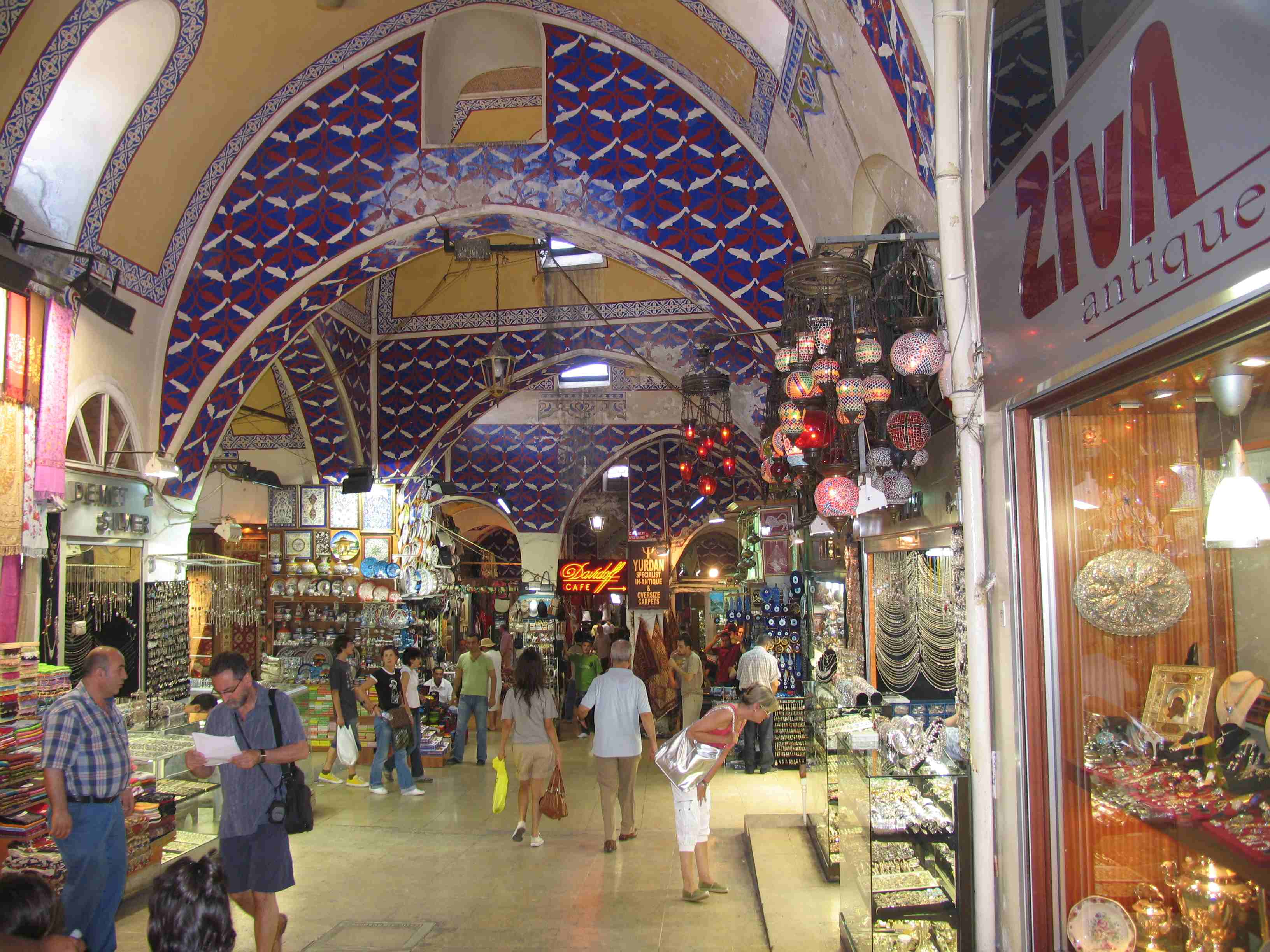 |
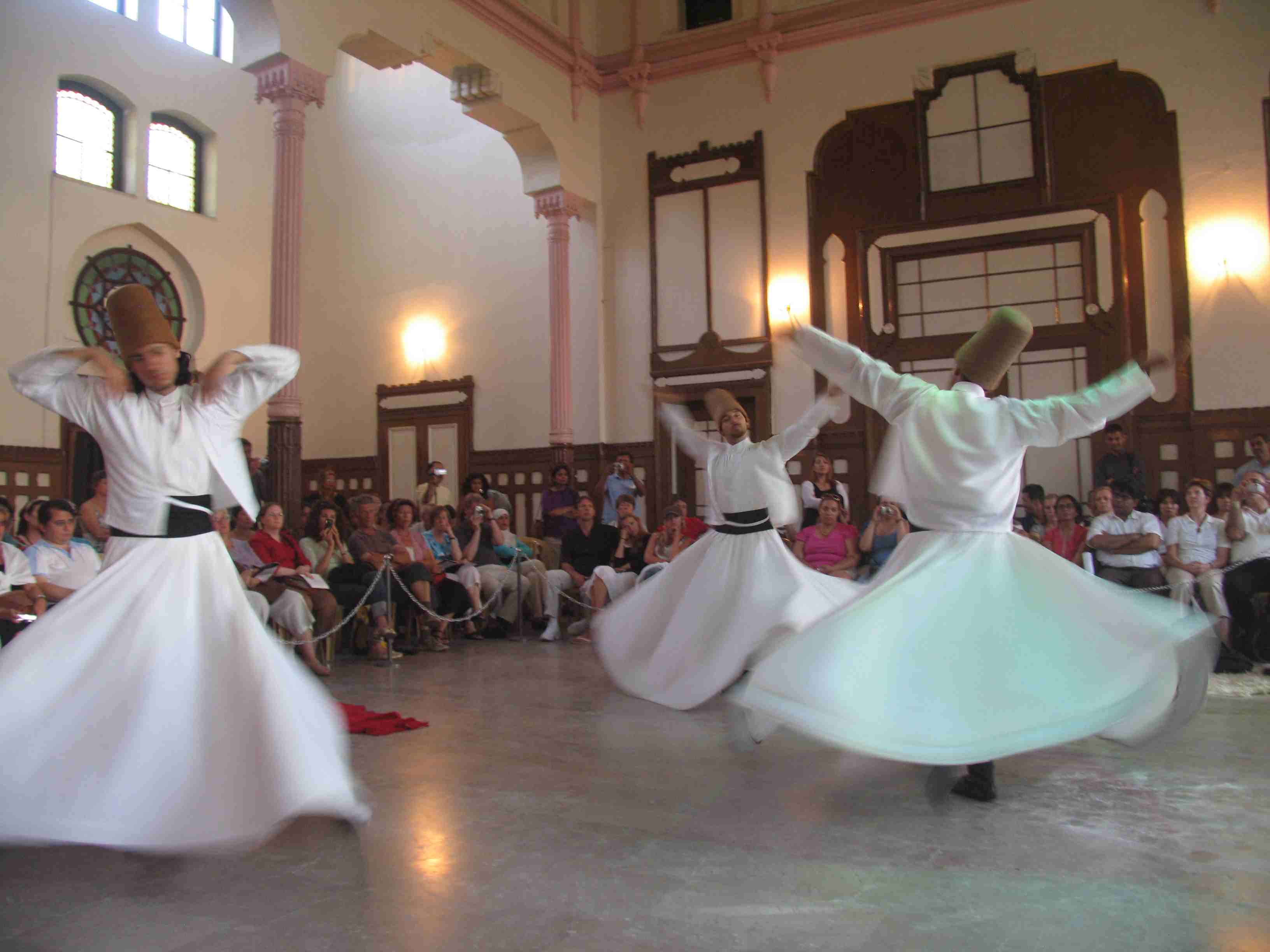 |
Shopping in the Grand Bazaar Whirling Dervishes
We spent one of our afternoons cruising up the Bosphorus toward the Black Sea for water’s edge view of the opulent palaces, mosques and private homes that line the shores of the strait. Another evening we took a taxi to the central train station, the final stop of the fabled Orient Express, where we watched a performance of the Whirling Dervishes as they twirled around the floor in their flowing white robes and conical felt hats in their centuries-old ancient mystical ceremony.
Memorials to Kemal Ataturk, the founder of the Turkish republic, were in evidence everywhere that we went in Istanbul and throughout the country. His statues can be found in parks and public buildings; his name is used on streets, squares and airports; and his picture is found on currency, postage stamps and in framed photographs in almost every shop and restaurant. Among his very remarkable list of reforms were: deposing the sultans and caliphs, adopting western dress, eliminating the fez and the veil, requiring surnames to all citizens, restricting marriage to just one wife, giving women the vote, mandating compulsory education, revising the alphabet and calendar, giving many of the cities Turkish names (including changing Constantinople to Istanbul) and, perhaps most importantly, establishing a secular republic which clearly separates church and state. Although 95% of the population is nominally Moslem, only a small percentage of them observe daily prayers, wear headscarves and follow other fundamental Moslem practices. Turkey is the only country among the Islamic countries, which has included secularism in her Constitution and guarantees complete freedom of worship to non-Moslems. To most outward appearances, we found Turkey to be very much like any other Western country.
Pergamon. With more than 2,000 archaeological sites and historical monuments dating back to the ancient Greek and Roman times, Turkey has more ancient classical sites than either Greece or Italy. From Istanbul, we flew down to Izmir (Smyrna) on the Aegean coast, where we were met by a driver and guide for a tour of two of the great cities of the ancient world, Pergamon and Ephesus.
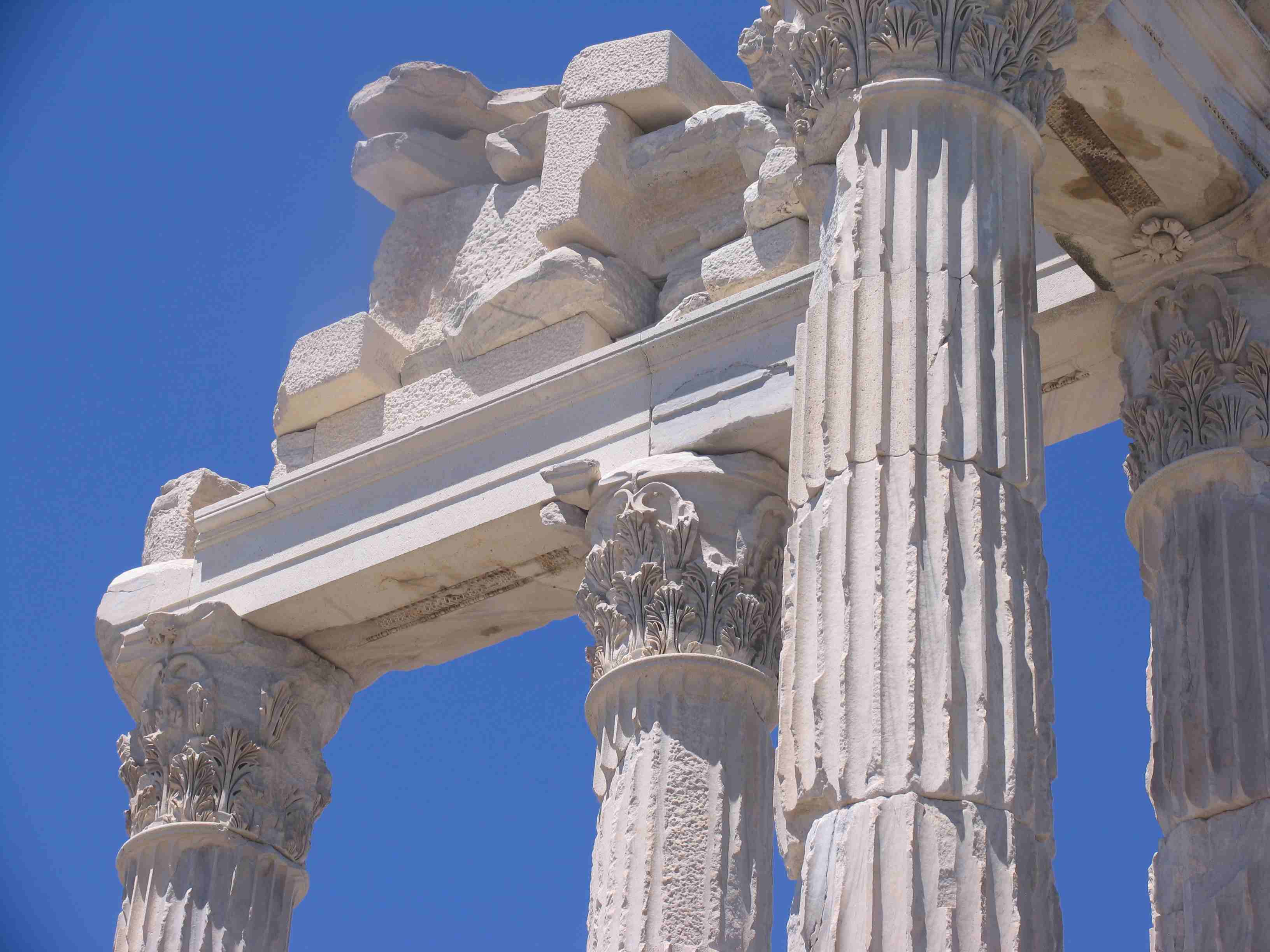 |
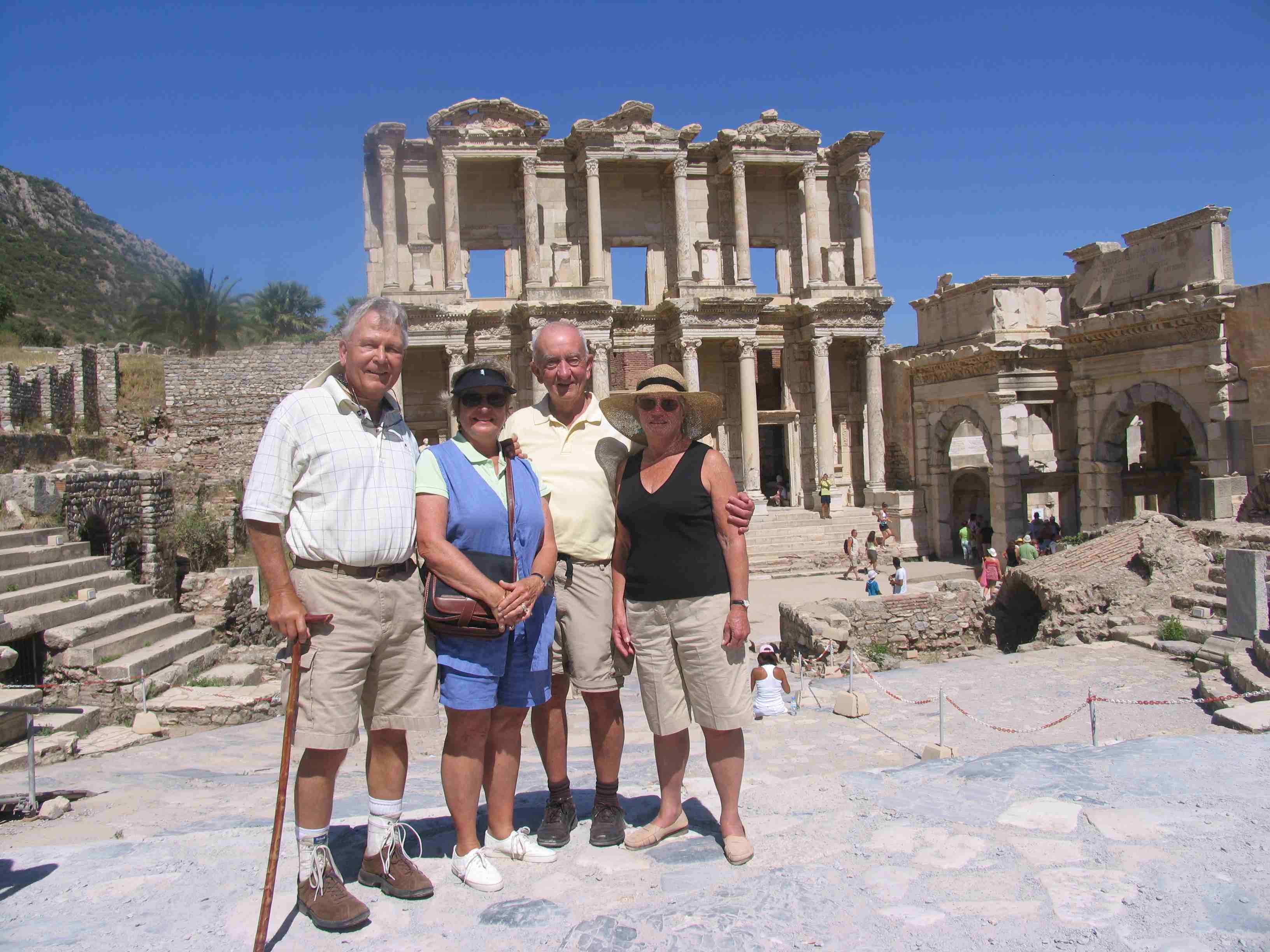 |
Traian Temple - Pergamon Celsus Library - Ephesus
Although there had been a town in Pergamon since Trojan times, its golden years were during the period between Alexander the Great and the Roman rule of Asia Minor. It was known for its medical center and great library which, with its 200,000 books, rivaled the more famous library in Alexandria, Egypt. Many of the ruins are still intact including the Asclepion or Medical Center, the Amphitheater, which seated 10,000 spectators, and the Acropolis, where the altar of Zeus once stood.
There was an understandable resentment on the part of our guide as he told us about the magnificent Altar of Zeus, which was once the centerpiece of the city before it was carted off to Germany over one hundred ago, just one of the many such priceless monuments now on display in Western museums. The Europeans’ claims that they can provide better care and introduce a greater audience to these ancient treasures seem a bit self-serving; however, in our case at least, they may have some merit. Had we not seen the famous altar in the Pergamum museum on a visit to Berlin a couple years ago, we might not have included the ancient site in our itinerary.
Ephesus. Ephesus is the best preserved ancient city in the Eastern Mediterranean. As a result, with a little imagination, it is not hard to imagine in a visit to Ephesus that you have been transported back two thousand years in time. Little has changed in the city over these past two millennia. Although many of the buildings have been toppled by earthquakes, the streets remain paved with marble of the finest quality, the mosaics retain their color and beautiful patterns and the restored stone statues still gaze down at the visitors as they have through the centuries.
Touring the ruins is like walking through a great outdoor museum. A mile long marble-paved street grooved by chariot wheels leads past many of the partially reconstructed buildings including the magnificent, two-story Celsus library and the Great Theater, which seated over 25,000 people in its day. Nearby is the single remaining column of the Temple of Artemis, which was once one of the wonders of the ancient world. Wandering through Ephesus, you can still sense the grandeur of the city and make a connection with the citizens of an ancient time
The biblical connections with Ephesus were also highlighted by our guide. The apostle John is said to have settled here with the Virgin Mary after the death of Jesus. St. Paul was a well-known figure in the town, preaching early Christianity. One of the chapters of the Bible, Ephesians, is made up of letters written by St. Paul to the citizens of Ephesus. I promised to send them another letter when I got home.
The Blue Voyage. One hundred years ago a Turkish writer wrote an account of his idyllic sailing excursion along Turkey’s Aegean coast. He called his book the “Blue Voyage”, a name that has since been adopted for vacation cruises along these shores. Most of the cruise boats are “gülets”, two masted, wooden sailing vessels about sixty feet long, which have been constructed in the style of ancient cargo bearing craft which were used to trade along the coast of Turkey.
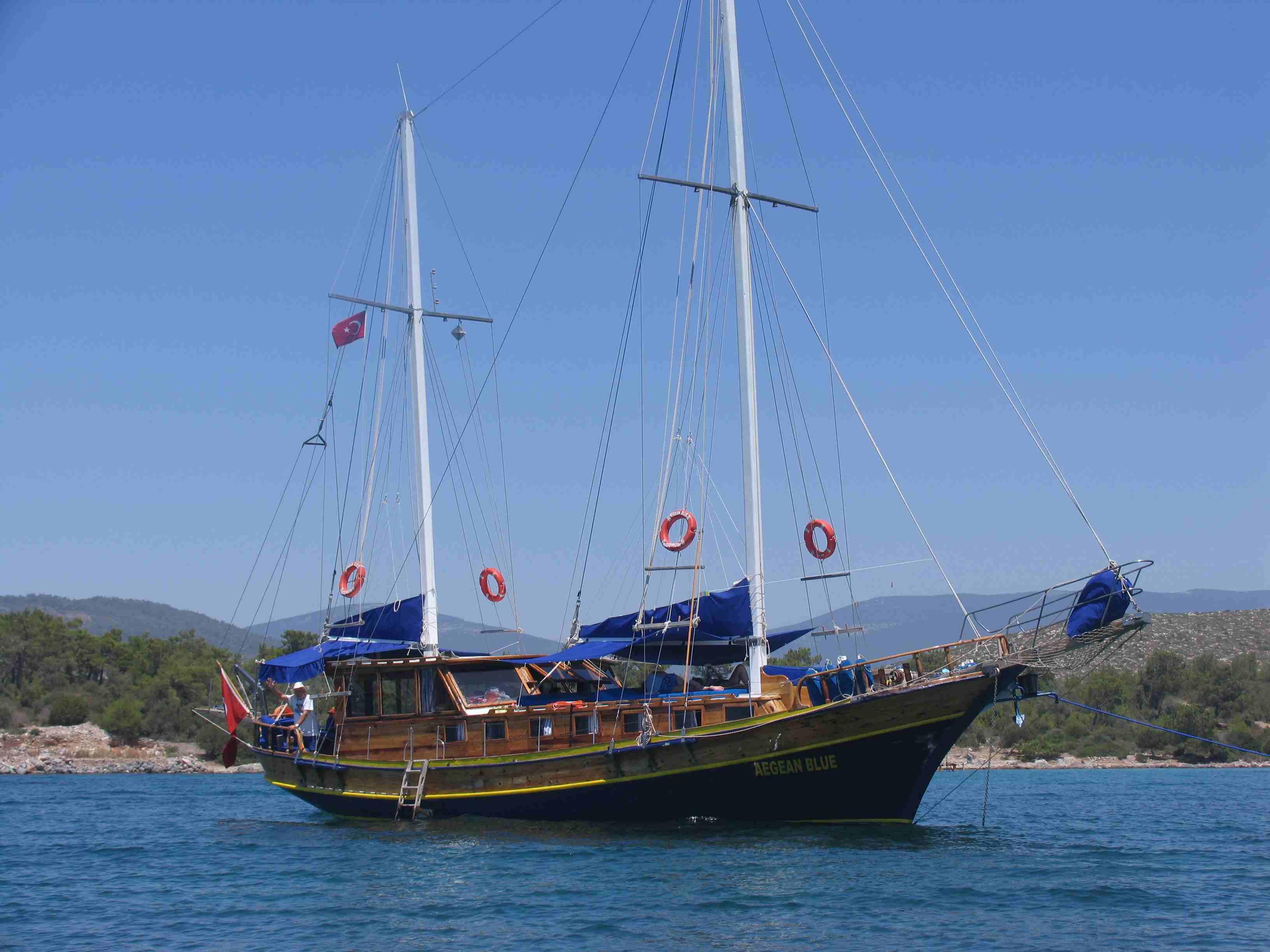 |
 |
The Aegean Blue - Turkish Gulet The Crew of the Aegean Blue
Turkey's Aegean shores are among the loveliest in the country. The magnificent coastline, lapped by the turquoise waters of the Aegean Sea is dotted with idyllic fishing harbors, popular holiday villages and the remains of ancient civilizations, fascinating reminders of the 5,000 years of rich history of this important Asia Minor region.
We boarded our boat, the Aegean Blue, in Bodrum for a three day sail along the coast. Our captain, Mehmet, and his nephew, çem, sailed the boat while his wife, Emine prepared wonderful meals for the four of us, starting each day with a Turkish breakfast of tomatoes, olives, cucumbers, cheese, yoghurt, honey and Turkish tea and ending several with fantastic dinners of fresh fish pulled that day from the sea.
We dropped anchor several times a day in various seclude inlets for a refreshing swim, a nice lunch or an excursion to some nearby ruins including the Temple of Apollo erected by Alexander the Great during the third century B.C in Didyma and the underwater city of Myndos, a once great city which had fallen into the sea following an earthquake. Our idyllic blue voyage with our charming Turkish crew onboard the Aegean Blue ended all too quickly.
Cappadocia. We left the coast and flew to Kayseri in the heart of central Turkey to visit Cappadocia. It was a two hour flight and gave us an appreciation for the size of Turkey, which is larger than any of the countries in Western Europe and, in fact, larger than France and Spain combined.
Cappadocia is one of the most spectacular and unusual landscapes on the face of the earth. Centuries of wind and water erosion have sculpted fifty square miles of volcanic rock into a surrealistic vista with cones, spires and “fairy chimneys”, some as high as a five story building. The colors add to the dramatic spectacle: pink, white, terra cotta brown and bright mustard yellows with the gigantic, snow-capped Mt. Erclyes as a backdrop.
 |
 |
Cave Houses - Cappadocia Fairy Towers - Cappadocia
Ancient inhabitants of Cappadocia dug subterranean towns into the cones and cliffs to seek shelter from the early conquerors which included the Assyrians, Hittites, Macedonians, Turkic tribes, Persians, Mongols, Arabs, Armenians, Slavs, Greeks, Romans and Crusaders, all of whose armies marched across the great land bridge of the Central Anatolian Plateau over hundreds and hundreds of years of history. The early Christians arrived in the Fourth Century sculpting hundreds of domed churches, complete with vaulted ceilings, columns and pews from the soft volcanic rock. Beautiful paintings can still be seen on the walls and ceilings of the cave churches.
Today many of these same caves have been converted into comfortable hotels carved into the ancient rock and complete with every amenity. We stayed in the Museum Hotel, an opulent, seventeen-room boutique hotel and museum which offered Jacuzzis, a bottle of wine and a plate of dried figs in every room and featured an award winning restaurant. Fred Flintstone never had it so good.
We were given a tour of one of the many underground cities by a local guide, who took us down into the underground dwellings through hidden entrances which lead to elaborate, subterranean systems with air shafts, waste shafts, wells, chimneys and connecting passageways. Some of the complexes extended five stories down into the rock. The upper levels were used for living quarters while the lower levels were used for storage, wine making, flour grinding and worship in simple chapels. The climb through the low, narrow passageways was a bit claustrophobic but fascinating.
We had scheduled a hot air balloon ride over the Cappadocian landscape on our final day which, unfortunately, had to be cancelled due to high winds. That was our only disappointment in an otherwise perfect holiday in Turkey.
.